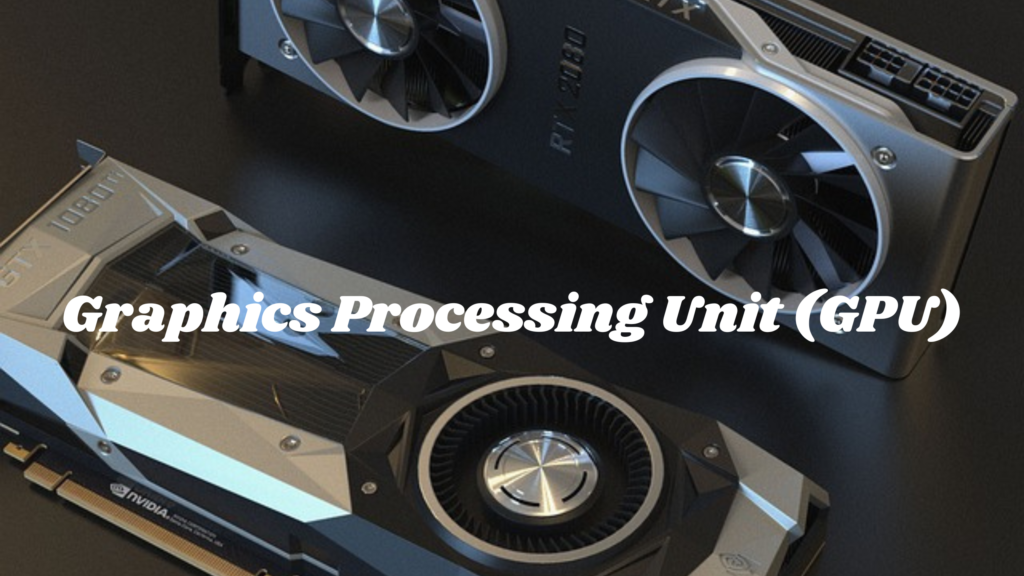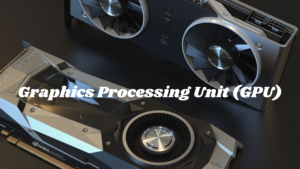Graphics Processing Unit (GPU) – Making it Simple for You
Graphics processing unit or GPU is the latest buzzword in technology. Here we are trying to understand it better and make it simple on your behalf.
Professionals who are in the business of artificial intelligence, 3D graphics and gaming must be aware of the term graphics processing unit (GPU). Sounds similar to CPU? GPUs help process images, videos and games faster. Here we are trying to help you understand the graphics processing unit (GPU) better.

Defining GPU – What is Graphics Processing Unit?
GPU abbreviated as graphics processing unit is a specially designed circuit that help faster display of images, videos and games. Later this circuit was also found effective for artificial intelligence (AI). The graphic processing units are initially designed for fast rendering of 3D graphics.
Evolution and History of GPU
As we are trying to understand graphics processing unit in details, we should also understand its evolution and history. These are as follows.
- IBM launched the monochrome display adapter in 1981.
- In 1990s some companies launched super VGA or ultra super VGA.
- In 1996, 3dfx Interactive launched the Voodoo1 graphics chip.
- In 1999 NVIDIA made graphics processing unit (GPU) popular. However, the term was in existence for a decade.
- In 2000, NVIDIA launched the GeForce 8800 GTX.
Function of GPU – What Does GPU Do?
Before proceeding further let’s understand the function of GPU. We should start with saying that graphics processing unit or GPU has now become an inseparable part of computing. The primary function of GPU is to render graphics, videos and effects. But its functions are not limited to render. Here we will be discussing different aspects of Graphics Processing Unit.
GPU for Gaming
GPUs are widely used for gaming applications. As gaming includes complex graphics, its rendering requires robust graphics processing units.
GPU for Visualization
GPU is also used for professional visualization. People working on CAD applications, video editing and medical imaging have found GPU highly useful in running their applications. With the help of GPU, rendering these applications get easy.
GPU for Machine Learning
High computing power is required to train a machine learning model. Here GPU makes the process faster. Companies and big corporations are using cloud based GPUs to make their machine learning models a success.
GPU for Blockchain
Blockchain is the backbone of cryptocurrencies. The blockchains used in cryptocurrencies need GPUs for their smooth operation. However, Application-specific integrated circuits (ASIC) are increasingly replacing GPUs from blockchain operations.
GPU for Simulations
Complex simulation applications require GPUs for their operations. Simulation applications used in molecular dynamics, astrophysics and weather forecasting falls into this category.
How Does a GPU Work
You might be wondering how graphics processing units work and how they work so fast. Let’s give you an insight. GPU consists of a large number of multiprocessors loaded with memory blocks. Besides, there are a number of processors and their registers. In addition, GPU has memory of its own and it also uses the memory of the device it is being used on.
Every GPU functions differently and it depends upon its purpose, makeup of the chip and software used in the computer.
Types of GPU
Graphics processing unit or GPU can be divided into three types. Here we are giving a brief description of these three types of GPUs.
Discrete GPU
Discrete GPU is used as chip to perform a certain task. Most of the times the task is rendering graphics. Now GPUs are also used for machine learning and advance simulation. While being used for graphics, the GPU is installed in graphics card. For other purposes, it is installed directly on motherboard.
Integrated GPU
Integrated GPU or iGPU is nothing but CPU and GPU rolled into one. Initially these GPUs were introduced by Pentium, Intel’s Celeron and Core lines.
Virtual GPU
Virtualization is a new norm in computing and GPU are no exception. GPUs can also be virtualzed and they can be used with other server based virtual GPUs. The benefits of virtual GPU is that it can even be used while your computer is being maintained.
Difference Between CPU and GPU
CPU and GPU have several things in common. But there are several differences as well. Here we would like to turn spotlight on differences between CPU and GPU.
Difference in Function
A computer can run without CPU or central processing unit. It ensures that all the software in the system and on the server are running correctly.
When it comes to GPU, it helps CPU carry out certain functions like rendering graphics, videos and other things at a fast space. It breaks the task in several smaller pieces and completes it in a fast manner.
While CPU runs the processes serially, GPU runs the processes in parallel.
Difference Between GPU and Graphics Card
Most people use the terms GPU and graphics card interchangeably. But these things are not one and same.
A graphic card is an add-in-board (AIB) in a computer. It gets fitted on the mother board of the computer. GPU is an integral component of graphic card. It is graphics card that displays the image on display.
As it is said earlier, GPU is an integral part of graphics card. However, it can be directly fixed into motherboard and work like other component of the computer.
What is External GPU
An external GPU is a graphics processing unit which is kept outside a device and connects to the device through a high-speed interface. The GPUs are meant for boosting the performance of graphics. Apart from boosting the performance of graphics, GPUs are used for some other purposes as well. Here are others functions of external GPU.
- It gives a boost to your graphic efficiency without having to change your entire system.
- External GPUs are built to fit with every kind of computer and devices.
- You can plug and use it. This feature boost its portability.
- As it is an external component, upgrading it is easy.
- With external GPU gaming and virtual reality becomes very easy.
Advantages of GPU
We already have discussed the advantages of graphics processing unit and its role in fast rendering of graphics and other tasks.
GPU is Energy Efficient
GPU has been proved higher on energy efficiency as compared to CPU. Its per watt performance is higher than normal CPU. Due to its energy efficiency, GPU are also used in data centers and supercomputers.
GPUs offers Scalability
There are some tasks where higher processing power is required, in such cases using multiple GPUs can increase the processing power.
GPUs are Cost Effective
GPUs are also well known for the cost effectiveness as it saves you from buying an installing additional hardware for some tasks.
Disadvantages of GPU
GPUs have several advantages but they are not without disadvantages. Here we are listing disadvantages of GPUs.
Weak Single Thread processing
GPUs may be very good at parallel processing but when it comes to single thread processing, it is not without its limitations. Its individual cores are not as powerful as CPUs. So if you have a task that can’t be run in parallel, then CPU can’t meet the expectations.
Limited Memory
GPU memory is not as powerful as system memory (PC memory) that is Random Access Memory (RAM). So if you are doing something that requires high memory, you may face difficulty.
Programming GPU is Difficult
Another issue is with programming. Writing a program to utilize its full potential is not that easy. You need to have specific knowledge in programming to utilize its capabilities to the maximum.
Compatibility problem
GPUs may face compatibility problems while running certain applications. You may also face this issue while updating drivers.
What is a GPU in a Phone
Graphics processing unit in a phone is entitled for rendering graphics, images and videos in smartphones and tablets. It accelerates the use of graphics and images in these devices. With this image processing becomes fast and easy. The use of GPU also decreases the power consumption of the device.


.jpg)


